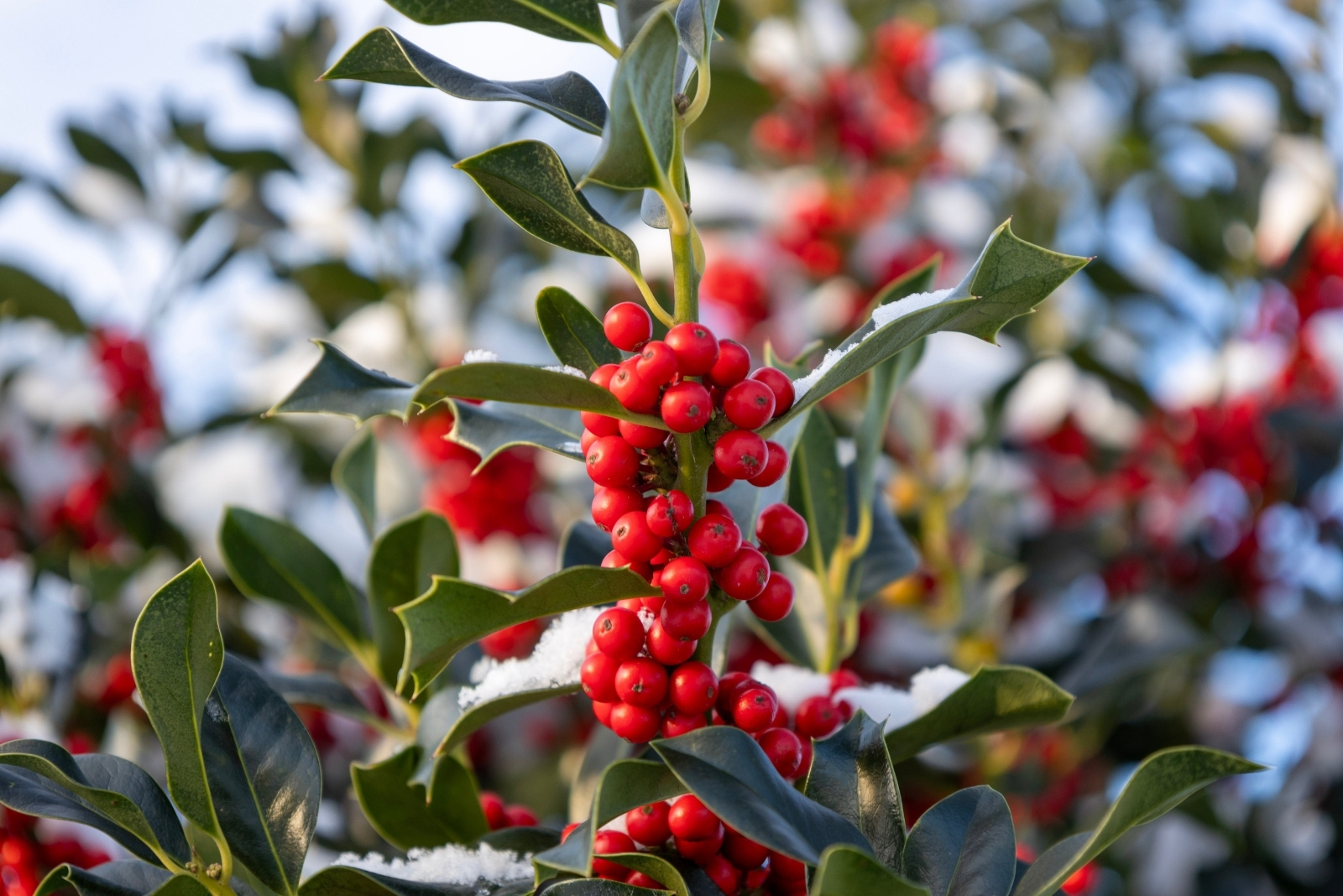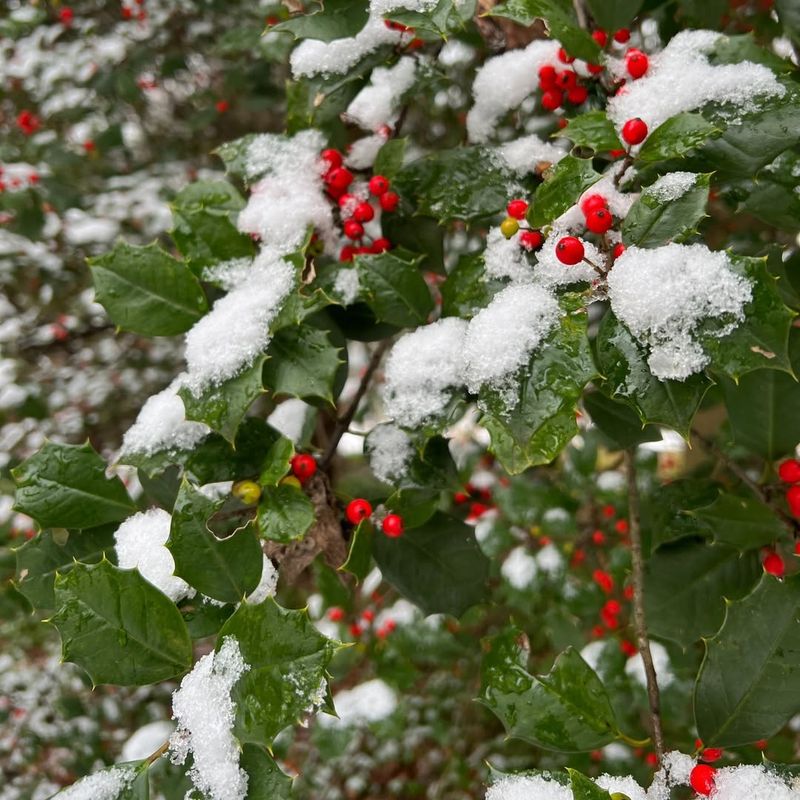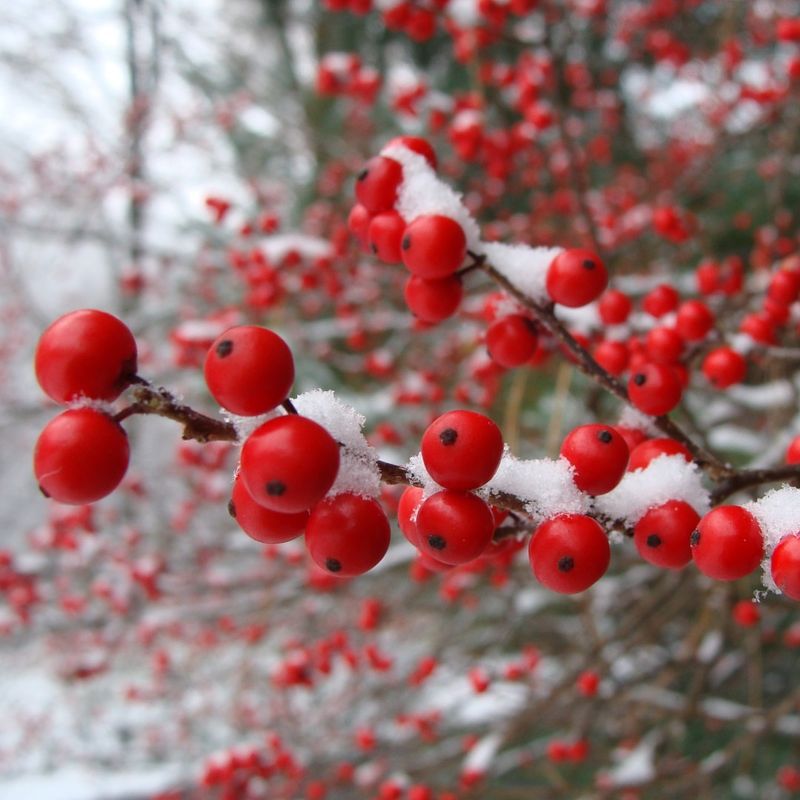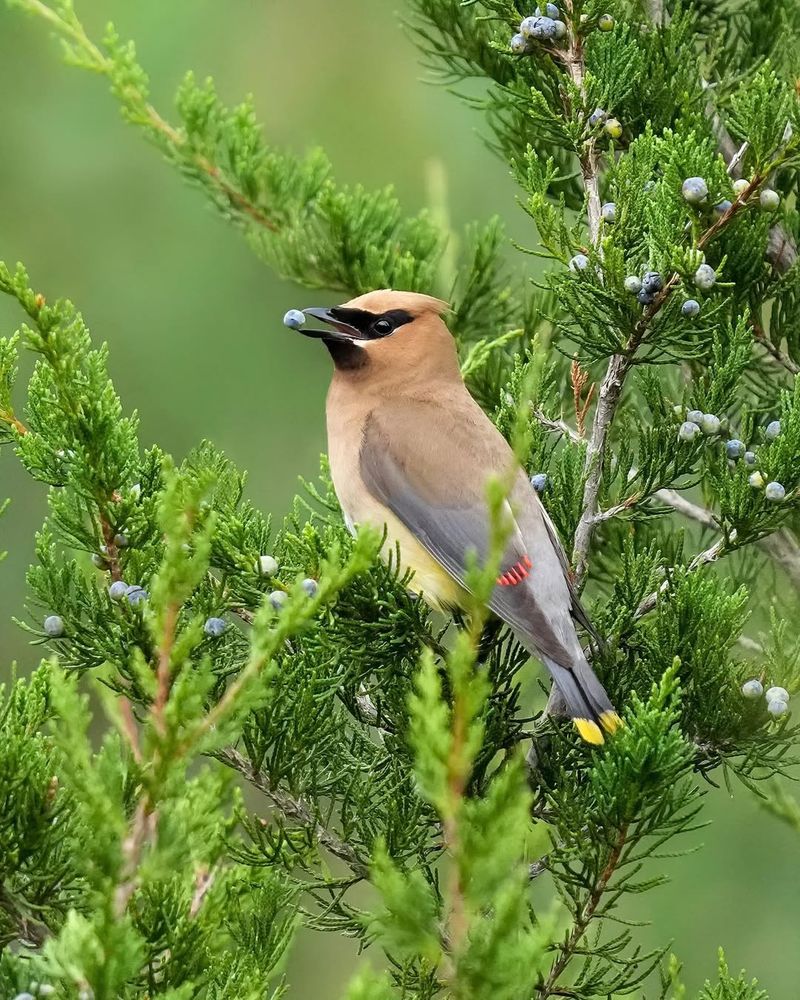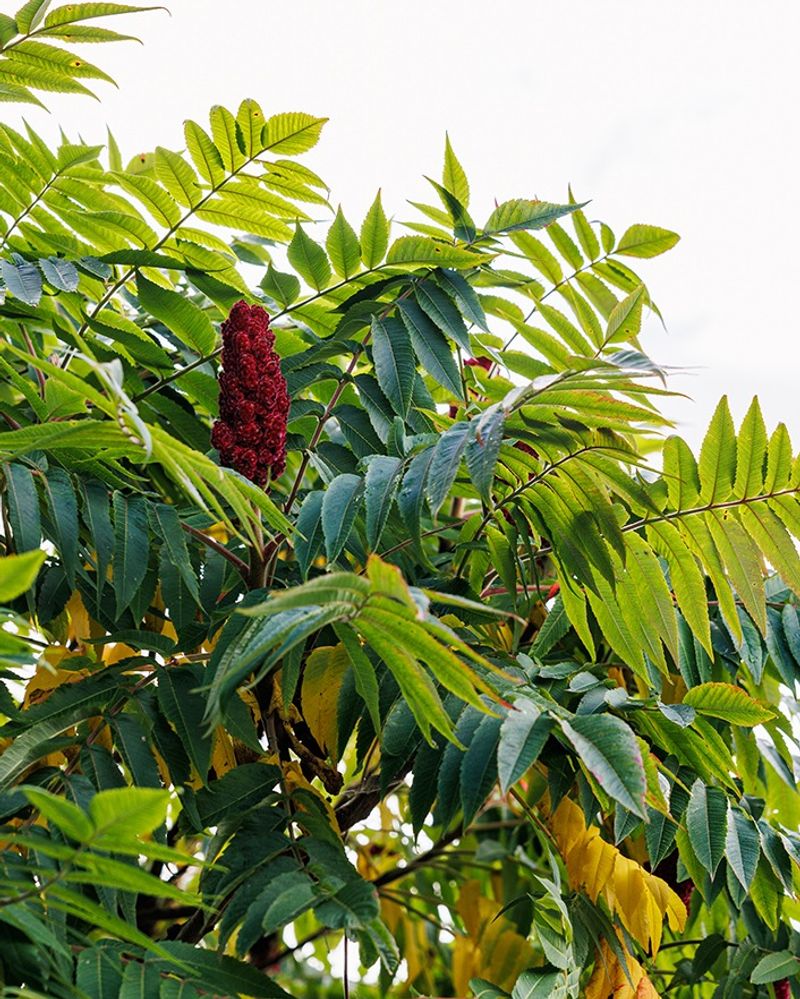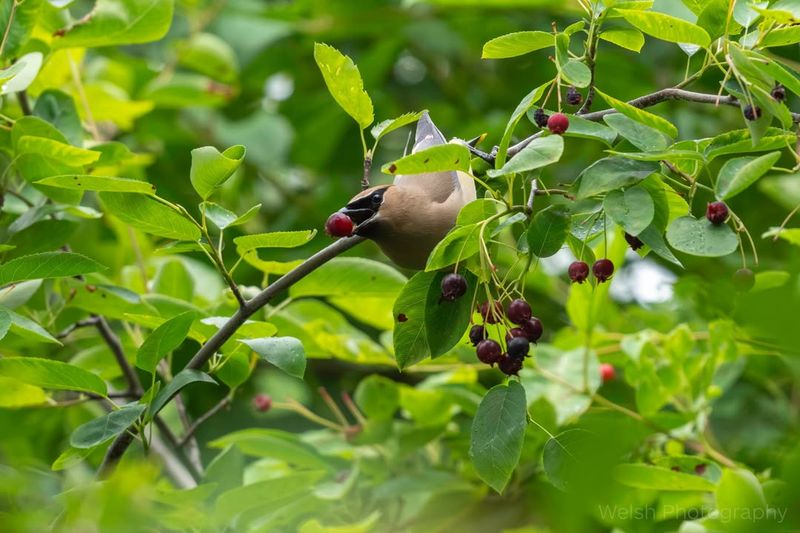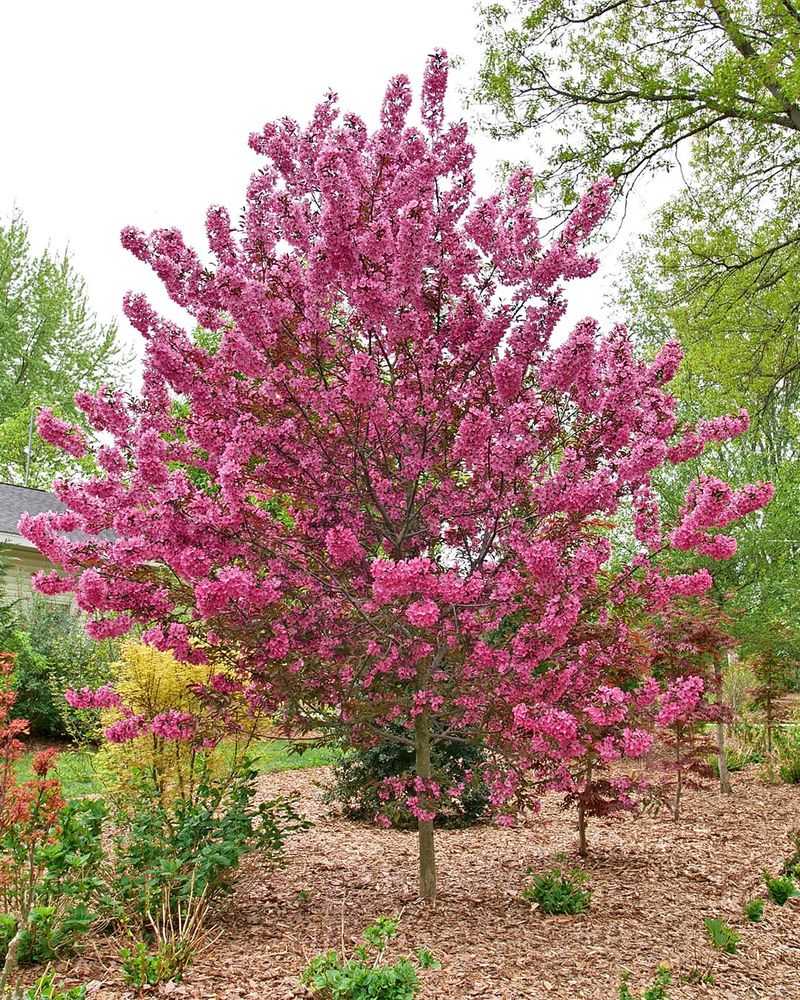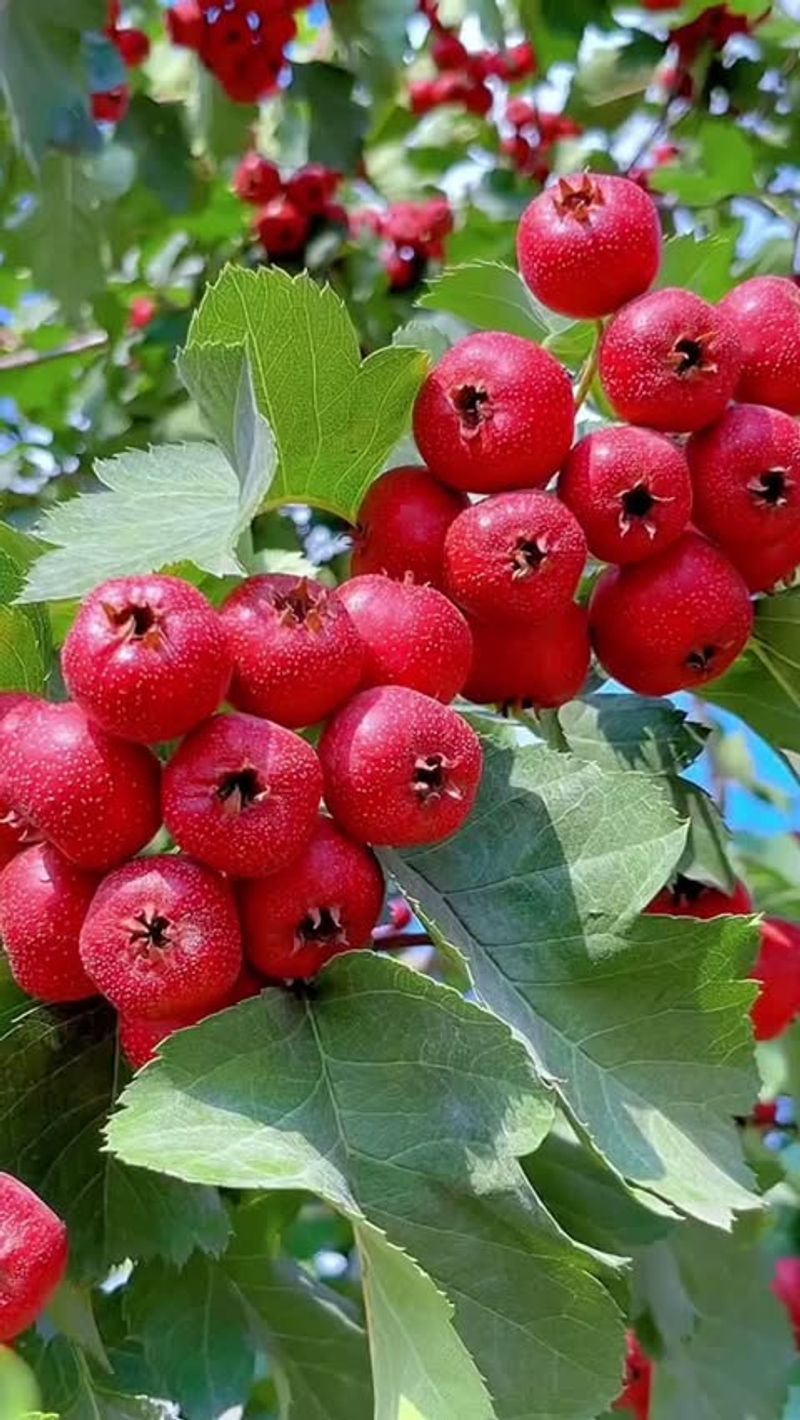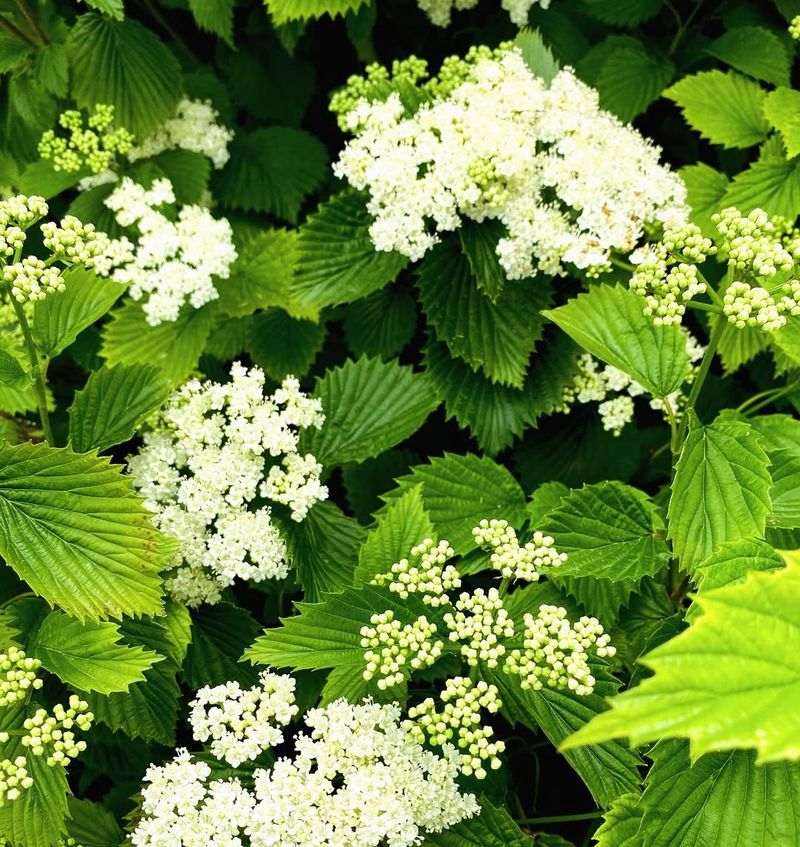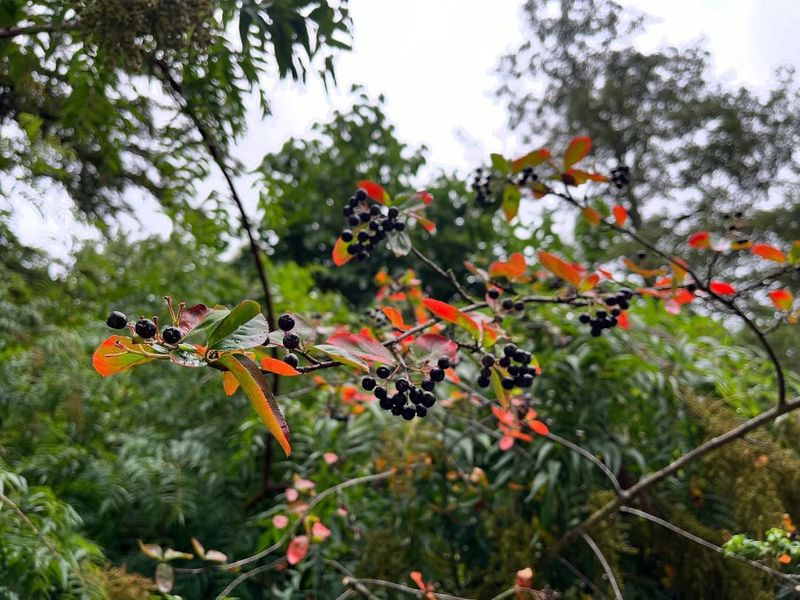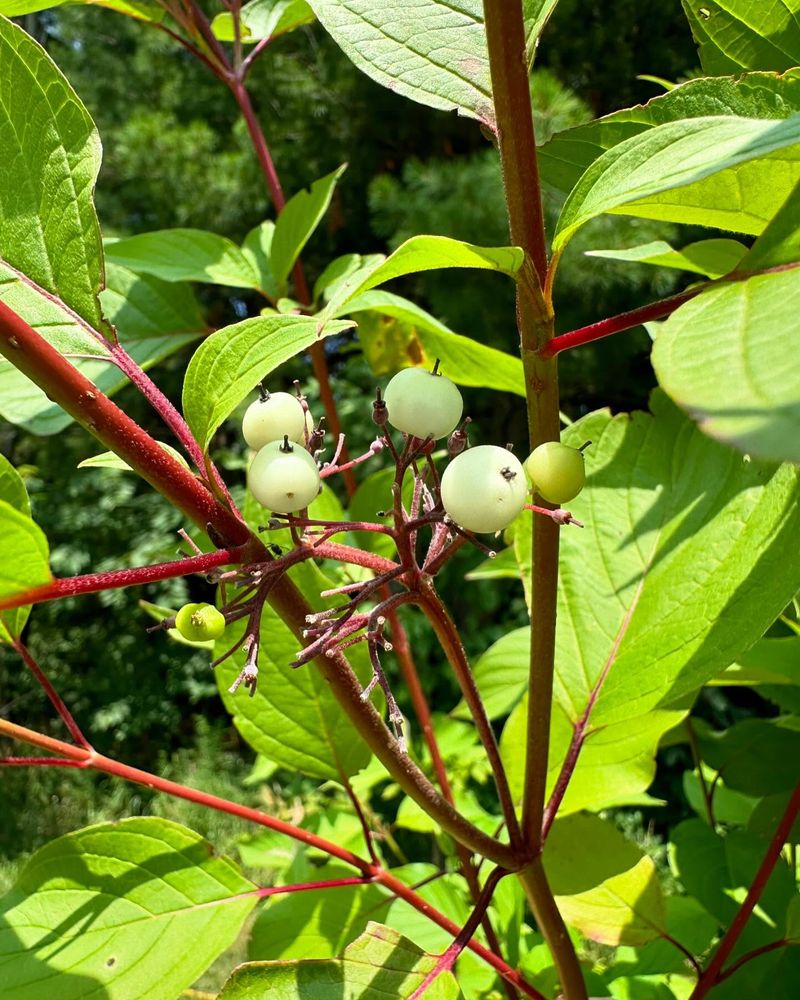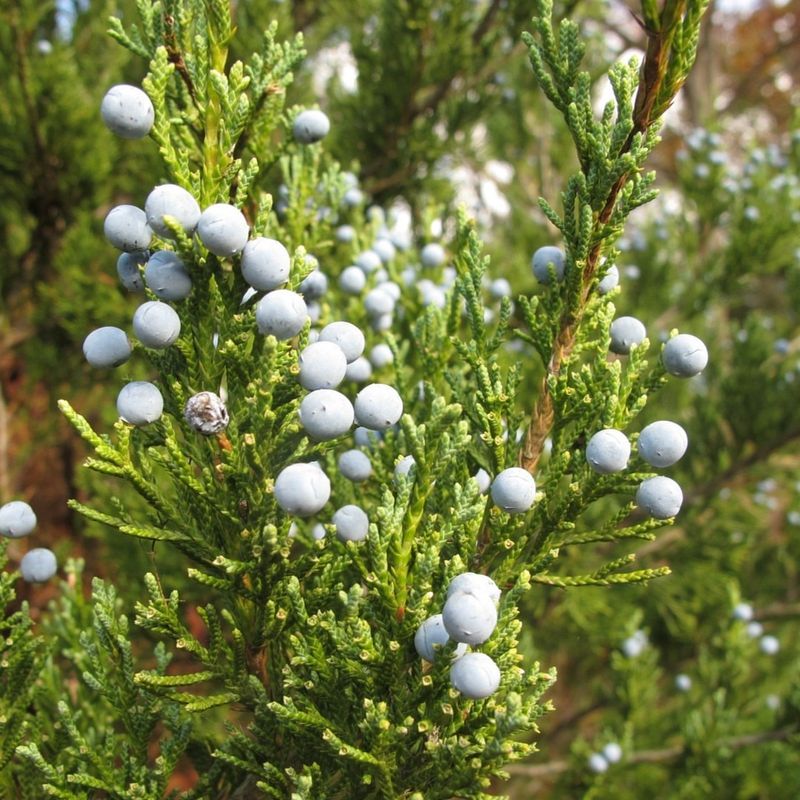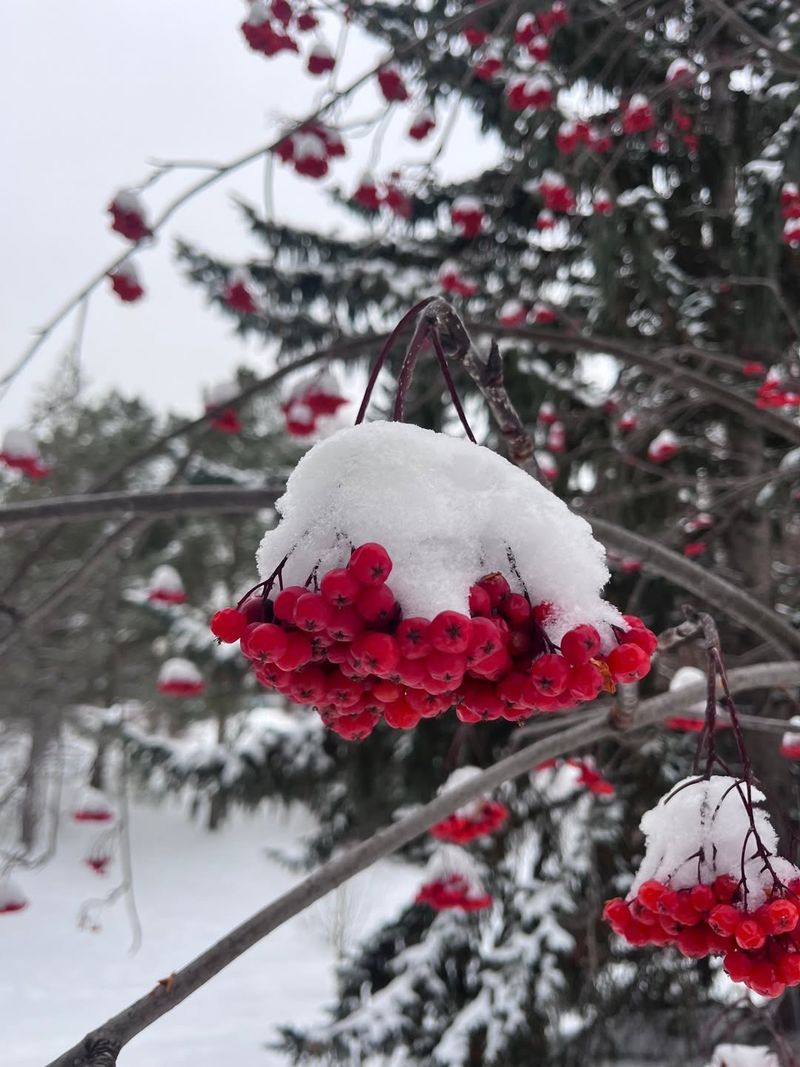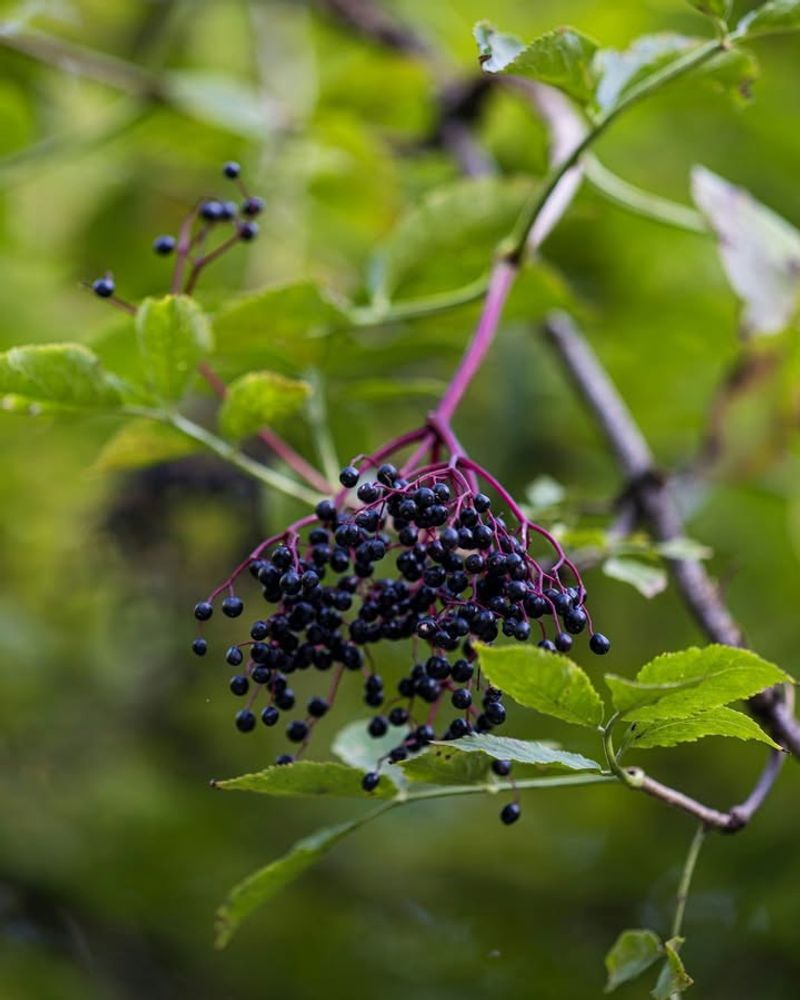Michigan’s cold winters can make feeding birds a real challenge. But nature offers plants that stand strong and keep birds coming all season.
These hardy options turn winter yards into bird paradises. Here are 13 beautiful plants that bring life to Michigan gardens even in the coldest months.
1. American Holly
Bright red berries cling to glossy green leaves even when snow blankets Michigan yards. Cardinals, robins, and blue jays flock to these vibrant clusters throughout winter, making your garden a lively bird haven.
Holly thrives in partial shade and well-drained soil. Female plants produce berries only when a male pollinator is nearby, so plan accordingly for maximum bird activity and winter beauty.
2. Winterberry
Once the leaves drop, brilliant red or orange berries steal the show on bare branches. Birds like waxwings and thrushes feast on these fruits when other food sources vanish in Michigan’s frozen landscape.
Winterberry grows best in moist, acidic soil and full sun. Like holly, you’ll need both male and female plants for berry production, ensuring birds have plenty to munch on all season long.
3. Eastern Red Cedar
Dense evergreen branches provide shelter while small blue berries offer nourishment to hungry birds. Juncos, sparrows, and cedar waxwings depend on this hardy tree during Michigan’s coldest months.
Eastern Red Cedar tolerates poor soil and drought, making it incredibly low-maintenance. Its dense foliage creates windbreaks and nesting sites, adding year-round value to your property while supporting local bird populations beautifully.
4. Staghorn Sumac
Fuzzy red berry clusters stand tall like velvet torches, persisting through snow and ice. Chickadees, woodpeckers, and bluebirds nibble on these tart fruits when Michigan’s winter larder runs low.
Sumac spreads quickly through suckers, so give it space or plant it where spreading won’t become a problem. Its brilliant autumn colors and unique branching structure add dramatic visual interest to any landscape design.
5. Serviceberry
Sweet purple berries ripen in early summer, but dried fruits often cling to branches well into Michigan’s winter. Robins, catbirds, and orioles adore these tasty morsels, which taste a bit like blueberries to humans too.
Serviceberry blooms with delicate white flowers in spring and boasts stunning fall foliage. It adapts to various soil types and light conditions, making it a versatile and beautiful addition to bird-friendly gardens.
6. Crabapple
Small, colorful fruits dangle from branches like holiday ornaments, feeding robins, waxwings, and thrushes throughout Michigan winters. Some varieties hold fruit longer than others, so choose wisely for extended bird benefits.
Spring brings a spectacular display of pink or white blossoms before fruits develop. Crabapples prefer full sun and well-drained soil, rewarding you with multi-season beauty and a constant buzz of feathered visitors year after year.
7. Hawthorn
Clusters of red berries persist through harsh Michigan winters, offering sustenance when other foods disappear. Thorny branches also provide safe nesting spots and protection from predators for smaller songbirds.
Hawthorn tolerates urban pollution and various soil conditions, making it ideal for city gardens. White spring flowers attract pollinators, while fall foliage turns vibrant shades of orange and red, ensuring visual appeal throughout the seasons.
8. Viburnum
Dark blue or black berries ripen in fall and often last into Michigan’s coldest months. Bluebirds, thrushes, and cardinals relish these nutritious fruits, which grow in attractive clusters on sturdy shrubs.
Many viburnum species offer fragrant spring blooms and brilliant fall colors. They thrive in partial shade to full sun with moderate moisture, creating layered interest in your landscape while supporting diverse bird populations naturally.
9. Black Chokeberry
Dark purple-black berries hang in clusters, persisting through snow and providing emergency rations for Michigan birds. Though too astringent for most human tastes, birds gobble them up eagerly when other options freeze solid.
Chokeberry adapts to wet or dry soils and tolerates salt, making it perfect for roadside plantings. Fiery red autumn leaves add a dramatic punch to your garden before winter sets in and birds take over.
10. Dogwood
White berries contrast beautifully against bright red or yellow stems, creating stunning winter interest in Michigan landscapes. Cardinals, woodpeckers, and grosbeaks feast on these high-fat fruits during freezing temperatures.
Red-twig dogwood thrives in moist soil and full sun to partial shade. Prune older stems occasionally to encourage vibrant new growth, ensuring your yard remains colorful and bird-friendly even when everything else looks dormant and gray.
11. Juniper
Blue-gray berries dot evergreen branches, offering both food and shelter to Michigan’s winter bird residents. Sparrows, juncos, and mockingbirds appreciate the protective cover and reliable food source during brutal cold snaps.
Junipers tolerate poor soil, drought, and harsh winds, making them incredibly hardy. Low-growing varieties work well as ground covers, while upright forms add vertical interest and year-round greenery to mixed borders and foundation plantings.
12. Mountain Ash
Bright orange-red berry clusters glow like lanterns against snowy Michigan skies. Waxwings, thrushes, and grosbeaks descend in flocks to devour these showy fruits, creating unforgettable wildlife viewing opportunities right outside your window.
Mountain Ash prefers cool climates and well-drained soil with full sun. Its delicate compound leaves and abundant spring flowers add charm, while fall berries provide critical nutrition for migrating birds preparing for long journeys south.
13. Elderberry
Dark purple-black berries ripen in late summer, but birds often strip them quickly from Michigan shrubs. Any remaining fruits dry on branches, offering winter snacks for robins, thrushes, and other berry-loving species.
Elderberry grows rapidly in moist soil and tolerates wet conditions other plants dislike. Creamy white flower clusters attract pollinators in spring, while berries can also be harvested for human use in jams, syrups, and wines before birds claim them all.

